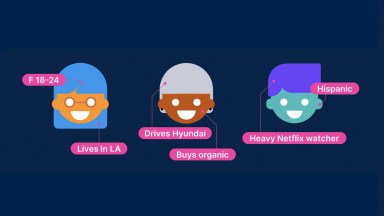The use of ad effectiveness measurements to buy and sell spots on the networks is one of the biggest trends in the TV ad industry. Lois Miller, President of Nielsen IAG Automotive, explained this new advertising “currency” to the Nielsen Wire, and why it’s become an important tool for marketers in the auto industry.
Q: An article in the latest BusinessWeek explains how program engagement and advertising effectiveness measurements are changing the way companies place their ads. How is Nielsen helping to change the game of TV advertising?
Lois Miller: Nielsen’s TV ratings have always been – and still are – an important tool in measuring how many people are watching any particular show. But those numbers alone can’t measure how engaged an audience is with that show, or more importantly, with the commercials. Understanding a need for these measurements, Nielsen’s IAG product has emerged as an industry leader for measuring program engagement and advertising effectiveness. This has helped advertisers target buys where the spots are most likely to be recalled by the audience. We’re essentially changing the currency for how ads are bought and sold.
Q: How exactly does your data help advertisers target their buys?
LM: Let’s say there are competing shows on Network A and Network B. Both have similar ratings and both cost the same. But our data indicates that the audience engagement with the program is 30% higher on Network A than Network B. Because there is a strong link between how closely viewers watch the program and their recall of the ad, airing an ad in the show with higher audience engagement will help ensure higher ad recall. In this scenario, that’s going to tip the advertiser’s purse strings toward Network A.
Q: Can’t networks use the data to their advantage to boost ad sales, too?
LM: Of course they can. While the IAG product was initially designed with the advertisers’ interests in mind, this new currency of ad data has helped to level the playing field for the networks. If a show or network might be struggling with lower ratings, it can point to our effectiveness data and argue that its audience has a strong base of attentive viewers. The network can also offer guarantees that its audience will be engaged with the show at a particular level. Not only does this help the network but is also ensures the advertiser will have attentive viewers that are more likely to recall their ads.
Q: You’re the President of IAG Automotive. How important are these effectiveness metrics for car and truck advertisers?
LM: In a time when the auto industry is under tremendous pressure, it’s more important than ever. Car companies need to make every dollar count and that’s exactly what makes our metrics so useful. If a company can spend less money on a spot that they know will be seen by a more engaged audience, then it’s an efficient use of its ad budget.
Our data can also help these car companies develop compelling and memorable ad campaigns. In 2008, for example, we saw 50% more airings for car and truck sales event ads than the previous year. That leads to a lot of ad clutter on a viewer’s TV screen and it can make it hard for that viewer to remember which automaker is offering what. That’s when effectiveness becomes the name of the game. Advertisers can use our data to see which creatives were most effective in connecting with the audience.
Just last month, Lois Miller presented the 3rd annual Nielsen IAG Automotive Ad Awards at the New York International Auto Show. A video recap of the awards can be seen here.



